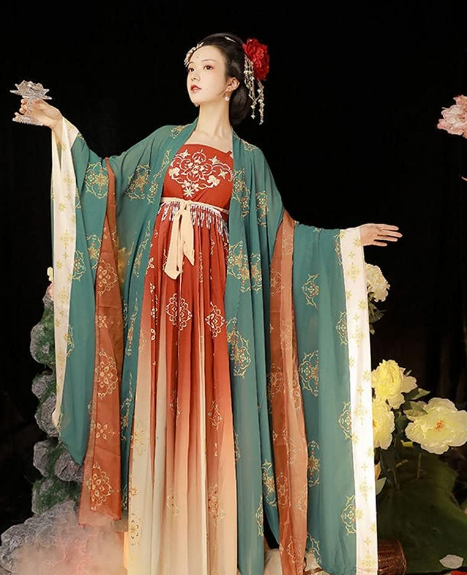The Tang Dynasty Clothing
The Tang Dynasty clothing, renowned for its elegance and vibrancy, reflected the prosperity and open-mindedness of the era. This period, spanning from the 7th to the 10th century, saw a rich tapestry of clothing styles and fabrics.
Historical Background of the Tang Dynasty Attire
The Tang Dynasty, often regarded as a golden age in Chinese history, greatly influenced the world of fashion. This era marked a significant shift towards more comfortable and diverse clothing choices, symbolizing a departure from earlier, more restrictive attire.
During the Tang Dynasty, attire evolved to accommodate changing lifestyles. The clothing was known for its loose-fitting nature, allowing freedom of movement, and the use of rich, vibrant colors like deep reds, blues, and greens, which became symbolic of the dynasty’s opulence.
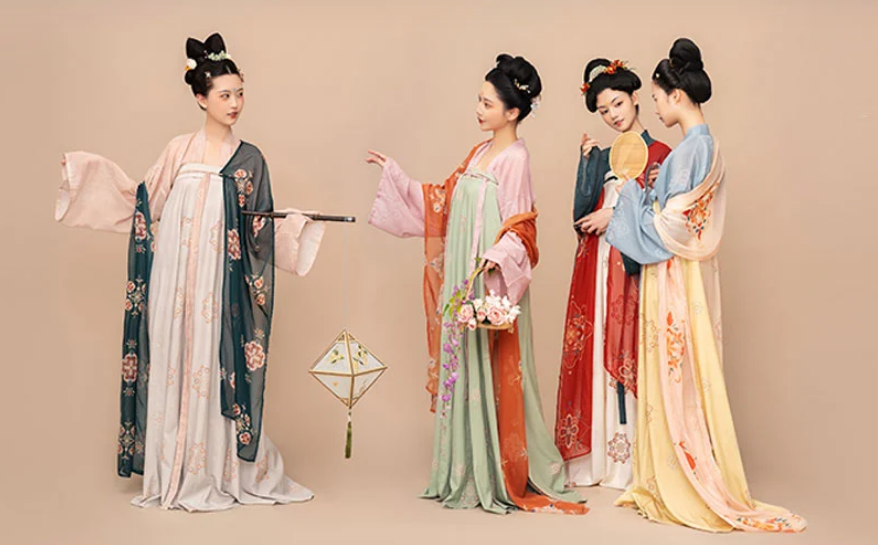
Characteristics of Tang Dynasty Clothing
Colorful Fabrics: Tang Dynasty clothing primarily used silk, often adorned with intricate patterns and designs. This luxurious material was favored by both the aristocracy and commoners.
Unisex Styles: The Tang Dynasty introduced unisex clothing styles, with both men and women wearing long, flowing robes with wide sleeves. This equality in fashion was a notable departure from previous eras.
Layered Fashion: Tang clothing often consisted of multiple layers, creating a graceful and flowing effect. Layered garments were popular among both genders.
Hairstyles and Accessories: Elaborate hairstyles were another hallmark of Tang fashion. Women often wore their hair in high buns adorned with jeweled hairpins, while men sported long hair, sometimes tied in a knot.
Influence on Neighboring Cultures: Tang Dynasty fashion influenced neighboring cultures, such as Japan and Korea, leading to similar styles and fabrics in these regions.
The Tang Dynasty’s clothing legacy endures, with its impact seen in modern fashion and cultural representations. The era’s emphasis on comfort, vibrant colors, and unisex fashion continues to inspire designers and artists today.
Authenticity of Tang Dynasty Costume
The authenticity of Tang Dynasty costumes is a subject of fascination and scholarly inquiry. Determining whether a piece of clothing truly hails from the Tang Dynasty involves a combination of methods and overcoming several challenges.
Methods for Authenticating Tang Dynasty Attire
Carbon Dating: Radiocarbon dating is a crucial tool in assessing the age of textile fragments. It measures the decay of carbon isotopes and can pinpoint the approximate age of the fabric. Tang Dynasty textiles typically date from the 7th to 10th centuries.
Historical Records: Ancient texts and paintings offer insights into the clothing styles of the Tang Dynasty. Comparing physical findings to these records can help establish authenticity.
Fiber Analysis: Microscopic examination of the fabric’s fibers can reveal its composition and whether it aligns with the materials used during the Tang Dynasty, such as silk or cotton.
Dye Analysis: Chemical analysis of dyes and pigments can provide clues about the era in which the clothing was made. Specific dyes and color palettes were prevalent during the Tang Dynasty.
Provenance and Documentation: Authentic Tang Dynasty attire often comes with documented provenance, tracing its history and ownership through generations.
Challenges in Determining the Origin of Tang Dynasty Clothing
Fragmented Nature: Tang Dynasty clothing artifacts are often found in fragments due to their age. Piecing together the original garment can be a complex puzzle.
Replicas and Forgeries: The popularity of Tang Dynasty fashion has led to the creation of many replicas and forgeries. Distinguishing authentic pieces from imitations can be challenging.
Limited Historical References: While historical texts provide valuable information, there are gaps in our knowledge of Tang Dynasty clothing, making authentication more difficult.
Aging and Preservation: Over centuries, clothing can deteriorate, making it harder to determine its authenticity. Proper preservation techniques are essential for accurate assessment.
Provenance Documentation: Not all Tang Dynasty clothing comes with well-documented provenance, making it challenging to trace its history.
In the quest for authenticity, scholars, archaeologists, and collectors rely on a combination of scientific analysis and historical research to unravel the mysteries of Tang Dynasty clothing. The determination of whether a particular piece is genuinely from the Tang Dynasty or a later imitation requires a meticulous examination of all available evidence.
Tang Dynasty Costume Evolution
The evolution of Tang Dynasty costumes is a captivating journey that reflects the changing societal and cultural dynamics of the time. This evolution encompasses various aspects of clothing styles, materials, and regional variations.
Changes in Tang Dynasty Clothing Styles Over Time
Early Tang Dynasty (7th Century):
- Loose and flowing robes with wide sleeves were the norm.
- Both men and women wore garments that reached the ankles.
- Intricate embroidery and silk fabrics were common, emphasizing luxury.
Mid-Tang Dynasty (8th Century):
- Clothing styles became more extravagant with layered garments.
- Bright, bold colors and intricate patterns continued to be popular.
- The introduction of intricate folding techniques added complexity to clothing.
Late Tang Dynasty (9th-10th Century):
- Simplicity became a trend, with less elaborate designs and plainer colors.
- Clothing styles shifted towards more streamlined and form-fitting silhouettes.
- Accessories, such as belts and jewelry, gained prominence as fashion statements.
Regional Variations in Tang Dynasty Attire
Northern China:
- Influenced by Central Asian and nomadic cultures, clothing in the north often featured fur-lined collars and thick, warm fabrics.
- Nomadic elements like trousers and boots were incorporated into daily wear.
Southern China:
- Southern attire emphasized comfort and ease of movement due to the region’s subtropical climate.
- Lighter fabrics like silk and cotton were favored, with shorter sleeves and skirts.
Tang Imperial Court:
- The court’s clothing was characterized by extravagance, with richly decorated robes, dragon motifs, and gold-threaded fabrics.
- Court fashion was highly influential on the general population.
Border Regions:
- Regions bordering neighboring cultures, such as Tibet and Vietnam, showcased unique attire influenced by their respective traditions.
The evolution of Tang Dynasty clothing showcased a blend of tradition and innovation, reflecting the dynasty’s cultural diversity and prosperity. This dynamic fashion era left a lasting legacy on Chinese attire and continues to inspire contemporary fashion designers.
Tang Dynasty Clothing Influence
The Tang Dynasty’s fashion legacy has had a profound and enduring impact on modern Chinese dress. Its influence is evident in various aspects of contemporary clothing and cultural expressions.
Influence of Tang Dynasty Fashion on Modern Chinese Dress
Silhouette and Fit:
- Tang Dynasty’s loose and flowing clothing styles have influenced modern Chinese fashion, emphasizing comfort and ease of movement.
- Loose-fitting robes, reminiscent of Tang Dynasty attire, are popular casual wear.
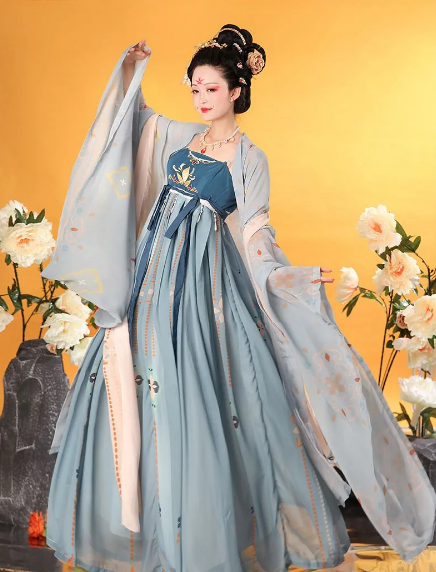
Color Palette:
- The vibrant color palette of Tang Dynasty clothing, including deep reds, blues, and greens, continues to be a source of inspiration in modern Chinese fashion.
- Contemporary designers incorporate these rich colors into their collections.
Unisex Styles:
- The Tang Dynasty’s unisex clothing styles have made a comeback in modern Chinese fashion, challenging traditional gender norms.
- Both men and women can be seen wearing variations of the same garment.
Influence on Cheongsam/Qipao:
- The traditional Chinese cheongsam or qipao, characterized by its high collar and form-fitting design, was influenced by Tang Dynasty fashion.
- It became popular in the early 20th century and remains an iconic piece of Chinese attire.
Cultural Festivals and Celebrations:
- Tang Dynasty clothing is often recreated for cultural festivals and events, preserving and celebrating the dynasty’s fashion heritage.
- Traditional Tang-style costumes are worn during Chinese New Year and other festivities.
Tang Dynasty Costume in Contemporary Culture
Film and Television:
- Tang Dynasty fashion frequently appears in Chinese films and TV series, showcasing the dynasty’s elegance and grandeur.
- Costume designers meticulously recreate historical clothing for period dramas.
Fashion Shows and Runways:
- Tang Dynasty-inspired fashion collections are showcased on international runways, blending traditional elements with modern designs.
- These collections pay homage to the dynasty’s fashion while catering to contemporary tastes.
Cultural Revivals:
- Cultural groups and enthusiasts organize events and performances featuring Tang Dynasty clothing to educate and engage the public.
- These revivals aim to preserve and pass on the heritage of Tang Dynasty fashion.
The influence of Tang Dynasty clothing on modern Chinese dress is a testament to the enduring appeal of its styles and aesthetics. From everyday wear to cultural celebrations and high fashion, the legacy of the Tang Dynasty’s fashion continues to thrive in contemporary Chinese culture.
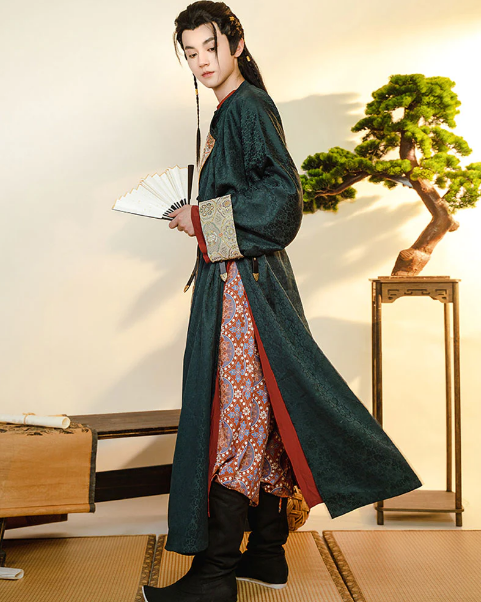
Tang Dynasty Clothing Preservation
Efforts to preserve Tang Dynasty clothing have played a crucial role in safeguarding this valuable part of cultural heritage. Preservation efforts involve various methods and have led to the discovery of remarkable artifacts.
Preservation Efforts and Discoveries of Tang Dynasty Attire
Meticulous Storage:
- Tang Dynasty clothing artifacts are carefully stored in climate-controlled environments to prevent deterioration.
- Humidity and temperature levels are monitored to ensure optimal preservation conditions.
Restoration and Conservation:
- Skilled conservators work on restoring and conserving Tang Dynasty clothing, repairing damage caused by time and exposure.
- These efforts help extend the lifespan of these delicate artifacts.
Archaeological Excavations:
- Archaeological digs have uncovered well-preserved Tang Dynasty clothing buried in tombs and burial sites.
- These discoveries provide valuable insights into ancient fashion and textile techniques.
Documentation and Cataloging:
- Tang Dynasty clothing artifacts are meticulously documented and cataloged, creating an extensive database for researchers and historians.
- Each artifact’s origin, condition, and historical context are recorded.
The Role of Tang Dynasty Clothing Artifacts in Historical Research
Understanding Fashion Evolution:
- Tang Dynasty clothing artifacts offer tangible evidence of fashion evolution during this era.
- Researchers can track changes in styles, materials, and design preferences over time.
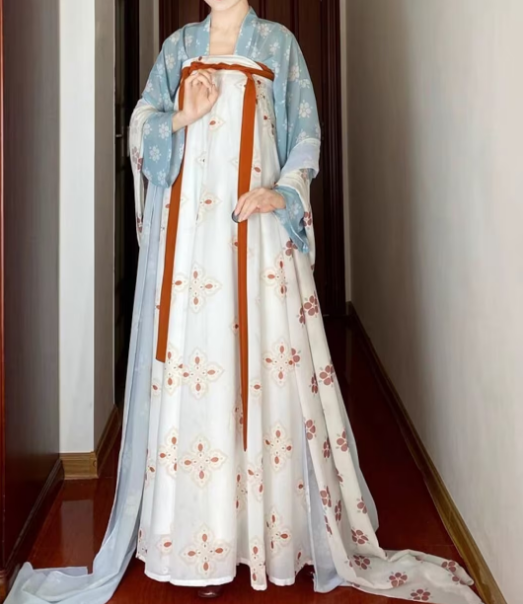
Societal Insights:
- Clothing artifacts provide insights into the social status, roles, and lifestyles of individuals during the Tang Dynasty.
- This helps historians reconstruct the daily lives of people from various walks of life.
Textile Analysis:
- In-depth textile analysis of Tang Dynasty clothing can reveal information about weaving techniques, materials, and dyeing methods.
- This information contributes to the understanding of ancient textile technology.
Cultural Significance:
- Tang Dynasty clothing artifacts hold cultural and historical significance, showcasing the dynasty’s cultural diversity and prosperity.
- They are important symbols of China’s rich heritage.
Preservation efforts and the study of Tang Dynasty clothing artifacts are critical for preserving cultural history. These artifacts serve as windows into the past, allowing researchers to unravel the mysteries of this splendid era in Chinese history.
Conclusion: The Tang Costume Debate
The ongoing debate regarding the authenticity of Tang Dynasty clothing is a multifaceted discussion that encompasses various perspectives and viewpoints.
Summarizing the Ongoing Debate
Historical Evidence:
- Some scholars argue that there is ample historical evidence to support the authenticity of Tang Dynasty clothing.
- They point to ancient texts, paintings, and archaeological findings that depict and describe clothing from the era.
Challenges in Authentication:
- Critics of the authenticity debate highlight the challenges in accurately dating and identifying Tang Dynasty attire.
- The fragmented nature of artifacts and the prevalence of imitations complicate the issue.
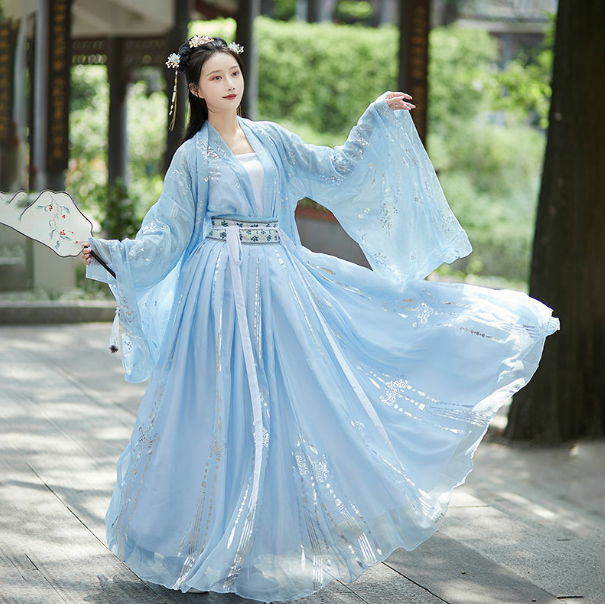
Influence on Contemporary Dress:
- The influence of Tang Dynasty fashion on modern Chinese attire is undeniable.
- This influence has led some to argue that the essence and spirit of Tang Dynasty clothing persist, even if specific artifacts are scarce.
Cultural Significance:
- Tang Dynasty clothing, whether entirely authentic or not, holds cultural significance as a symbol of China’s historical richness.
- It plays a vital role in preserving and celebrating Chinese heritage.
Perspectives on the Authenticity of Tang Dynasty Clothing
Conservative Stance:
- Some experts maintain a conservative stance, insisting on stringent criteria for authenticating Tang Dynasty clothing.
- They emphasize the need for irrefutable evidence, such as well-documented provenance or scientific analysis.
Adaptive Perspective:
- Others adopt a more adaptive perspective, acknowledging the challenges in authentication while appreciating the cultural value of Tang-inspired attire.
- They argue that the spirit of Tang Dynasty fashion lives on in contemporary dress.
Balancing Act:
- Striking a balance between authenticity and cultural continuity is a common viewpoint.
- This perspective suggests that both preserving genuine Tang Dynasty clothing and allowing creative reinterpretations can coexist.
The Tang costume debate highlights the complexities of preserving historical clothing while embracing its cultural influence on modern attire. While the authenticity of individual pieces may remain uncertain, the cultural and historical value of Tang Dynasty clothing endures, offering a rich tapestry of tradition and inspiration for the future.
Learn more about Tang Dynasty clothing on Wikipedia
